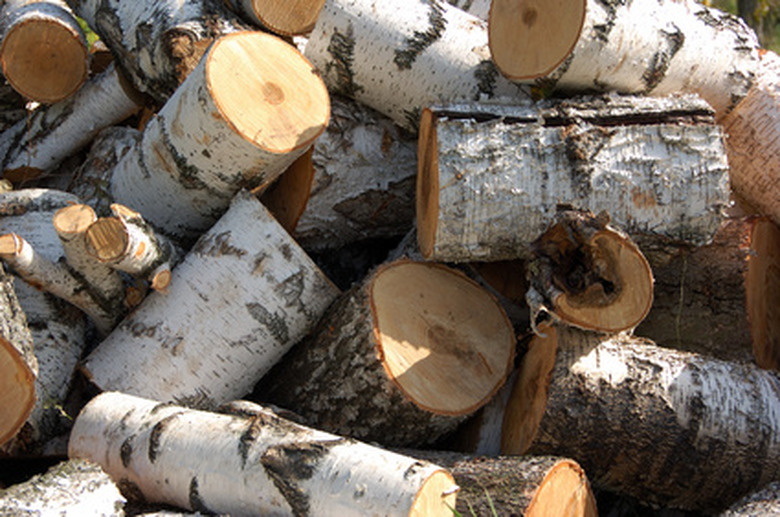How Do I Replace A Fuel Line On A Husqvarna Chain Saw Model 51?
Things Needed
- Fuel container
- Phillips screwdriver
- Needle-nose pliers
- Scissors
Fuel lines on chainsaws encounter heat from the engine near the carburetor. After several years of use, a fuel line can incur small cracks and leak gas before it reaches the carburetor. This will cause a Husqvarna model 51 chainsaw to die, sputter or not run at all depending on the size of fuel leak. Fuel lines are made of plastic and are replaceable on chainsaws by most homeowners.
Step 1
Place the Husqvarna chainsaw on a flat table or work bench.
Step 2
Grasp the fuel cap with one hand. Turn it counterclockwise to loosen and remove it straight out. Tip the chainsaw on the left side to pour any fuel from the tank into a gas container.
- Fuel lines on chainsaws encounter heat from the engine near the carburetor.
- Tip the chainsaw on the left side to pour any fuel from the tank into a gas container.
Step 3
Place a Phillips screwdriver in the recessed screw in the chainsaw top cover. Turn the screw counterclockwise to loosen and pull the screw straight out. Repeat this process for the remaining three screws. Set the screws aside.
Step 4
Place needle-nose pliers on the fuel line visible through the two covers on the right side. Pull the fuel line straight out to disconnect it from the carburetor.
Step 5
Open the fuel tank; insert needle-nose pliers and pull the entire fuel line out of the fuel tank.
- Place a Phillips screwdriver in the recessed screw in the chainsaw top cover.
- Place needle-nose pliers on the fuel line visible through the two covers on the right side.
Step 6
Pull the fuel filter off the end of the fuel line.
Step 7
Place one end of the new fuel line in the tank between the two case pieces on the right side of the chainsaw. Press the line in to insert about ¼ inch into the tank.
Step 8
Place needle-nose pliers inside the fuel tank; grasp the fuel line and pull it through the tank. Leave about 3 inches of fuel line on the exterior of the tank.
Step 9
Pull the excess fuel line out of the tank and cut the end off squarely with scissors. Slide the fuel filter on the fuel line. Push the fuel line into the tank.
- Pull the fuel filter off the end of the fuel line.
Step 10
Cut off the other end of the fuel line protruding from the tank squarely with scissors. Insert the line through the crack in the body with needle-nose pliers to enter near the carburetor. Pull the fuel line up out of the body with needle-nose pliers and press the end on the carburetor inlet.
Step 11
Replace the chainsaw top cover, attaching it with the Phillips screws. Turn the screws clockwise to tighten the cover.
Tip
Adjust any extra fuel line on the outside of the tank near the carburetor. Pull the excess into the fuel tank so the line does not protrude on the exterior, touch hot parts and melt. Cracked fuel lines inside of a chainsaw fuel tank will not supply the carburetor with enough fuel for a chainsaw to run smoothly. Replace the fuel filter with a new one to avoid reinstalling a clogged filter.
Warning
Leaking fuel lines cause fire hazards when the fuel touches hot chainsaw parts.
